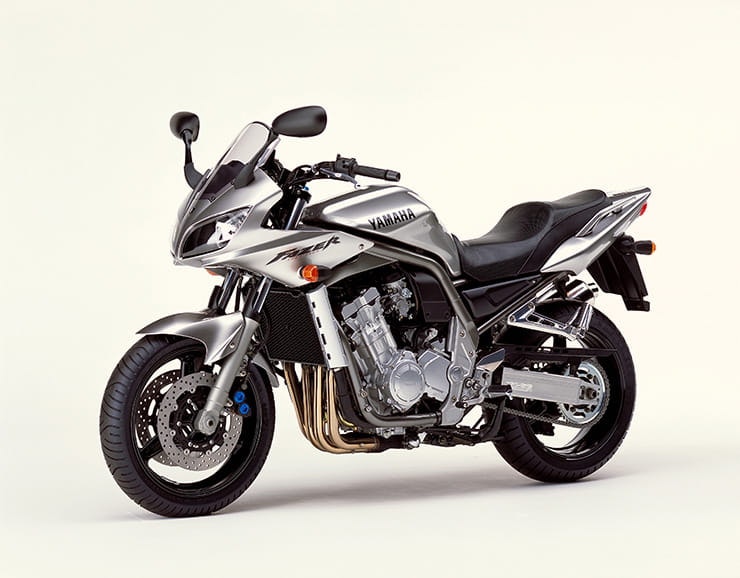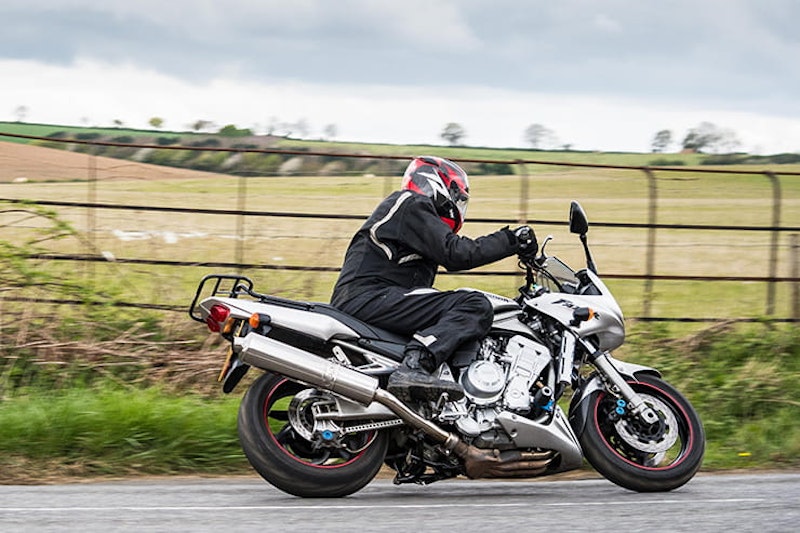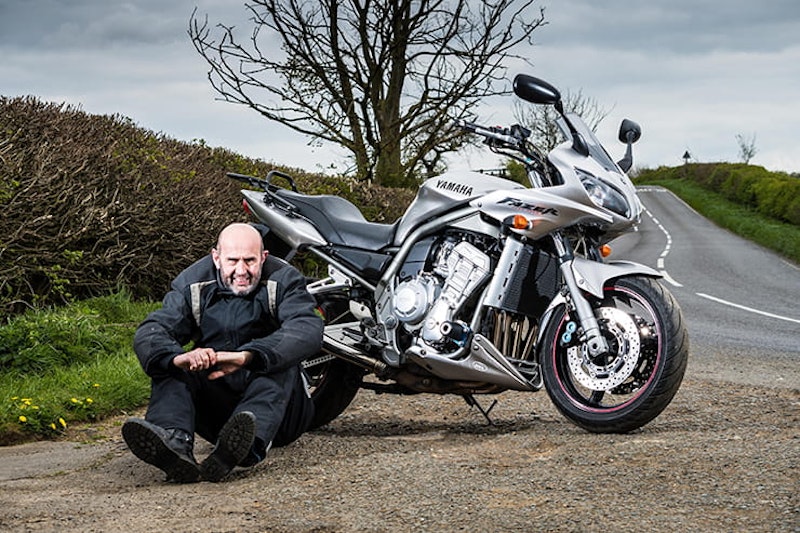Yamaha FZS1000 Fazer (2002) - Review | Sorry Yamaha… we were wrong!
By Steve Rose
BikeSocial Publisher
23.05.2017
Dear Yamaha…
Back in 2001 we, the gentlemen of the UK bike press, might have given the impression that we were less-than-impressed with your all-new Fazer 1000. We’d been expecting a high-barred, half-faired, fire-breathing, wheelie-popping streetfighter for the same price as a Suzuki Bandit 1200. What we got was a sophisticated, long-wheelbase, stable, flexible sports tourer with suspension and brakes borrowed from the unloved Thunderace, and a list price more than £2k over a typical dealer price for the Bandit.
The new Fazer might have had an ex-YZF-R1 engine, but it weighed 30kg more than the R1, made 15bhp less and cost £8200 – which was more than most dealers were selling R1s for. Some of us (well, me, actually) might have even described the Fazer as closer to being an over-priced Diversion 1000 than a street-fightered R1.
Sorry. Because, fast forward 16 years and it turns out we were all idiots. Ride one today (the one I just bought in fact), now we’re all less obsessed with sports bikes, and it turns out that the Fazer was actually a brilliant blend of sports performance, comfort, agility and built-to-last in a way that few Yamahas had ever been up to that point. By the time it came out, most bikes had adopted fuel-injection on their way to becoming electronically-obsessed playthings. The Fazer represents the last stand of the honest, analogue motorcycle, and in 2017 it still feels surprisingly modern and very, very capable.
I’d forgotten how strong a big-bore engine fed by four CV carbs can be. Low-down drive comes in a great, fat wave of torque, delivered in a very different manner to the digital precision of fuel-injection. Carb-fed engines bring a resistance through the throttle cables (remember them?) as the vacuum from the engine feeds back up the wire, making a physical (and emotional) connection between right wrist and back wheel.
Top-end power is irrelevant because you short-shift through the gears, changing up around 7000rpm as the torque starts to drop away. This sub-£2k motorcycle is still stunningly quick, but feels comfy and safe too. So far, it has also averaged 51mpg from its 35,000-mile, well maintained motor, giving a range of well over 200 miles from the 21 litre tank.
Traction remains electronically uncontrolled and brakes are free to lock at will, but there’s so much feedback coursing through the whole bike that it doesn’t matter. My one has had the forks pulled a few mm through the yokes to quicken up the steering (a common mod) which makes a significant difference to the speed of the steering without making it unstable.
Fazer forums are all about the rear suspension – the bike’s biggest weak spot. Standard shocks were never quite good enough for seriously aggressive riding and most had lost performance after a few years. Maybe my riding has become smoother than I thought or maybe my bike has a particularly good shock absorber, because so far I haven’t found the performance lacking so, the one thing I expected to spend money on can wait for a while.
And I know I was lucky – I got a very good example for a very good price. Asking prices for similar bikes are higher, although they tend to stick around, unsold for longer too. Fazer owners seem to be sensible people who look after their bikes (a bit like, ahem, Diversion owners used to be). Similar money also buys Honda Blackbirds and early VFR800s. Both of those are as good as the Fazer, but you’ll be looking at older bikes with more miles and either less sporty handling (the Black-bus) or a lot less performance (the VFR). We’ve said it before, at this end of the market, the best bike out there is the best example for the money. For me, this time it was this Fazer 1000 by miles.
Smug? Me? You bet.
Share on social media:


